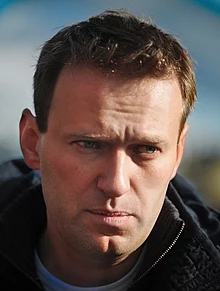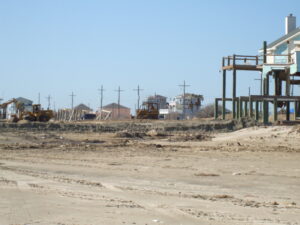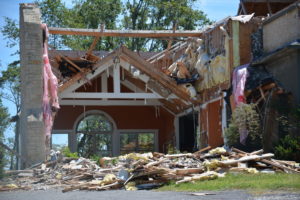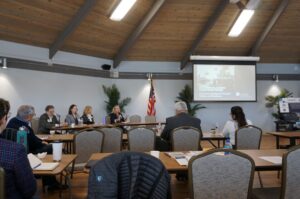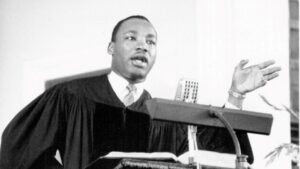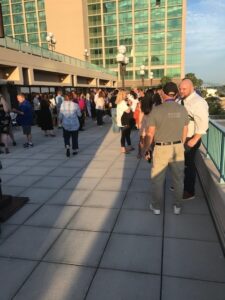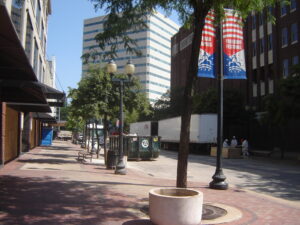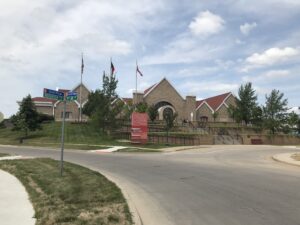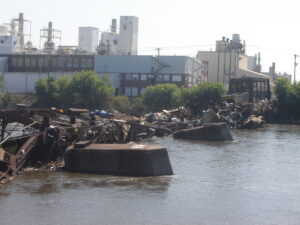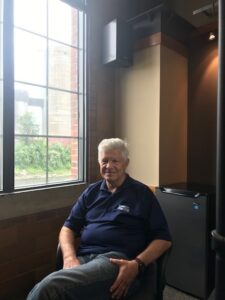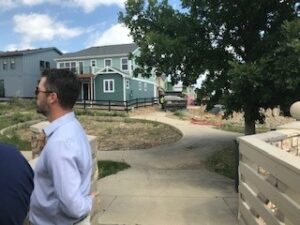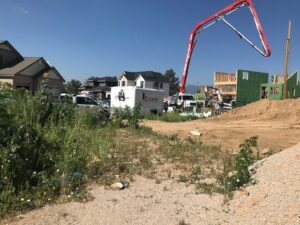
Image from Shutterstock
I have never been terribly enthusiastic about New Year’s Eve resolutions. This is not because I lack resolve, but because the start of a new year has usually struck me as a rather arbitrary time to gain such resolve or to turn over a new leaf. If one is committed to certain goals and principles in life, then almost any day will do for fashioning new objectives in serving those goals, depending on circumstances. Why January 1? I suspect that it is mostly a reminder for many people that they have not spent enough time thinking about or pursuing their goals. They may need to develop the habit on an ongoing basis rather than pretending that the start of a new year will make things different. Will power and commitment matter. Do you really want to make things different? If so, then why not make the decision on February 4, or your birthday, or even the Fourth of July? Any day of the year will do, as long as the commitment is real. That commitment may arise out of a life-changing event, but it does not have to. New Year’s resolutions often fade into the ether of our dreams because those making them have not developed an adequate habit of connecting their dreams with a determination to make them happen.
All that said, on this particular trip around the sun, New Year’s Day seems for me a perfect day to launch some resolutions, even if many are focused on unfinished business. But I don’t just want to pick up the pace in 2024. I want to be metaphorically shot out of a cannon on New Year’s Eve. I want to start the new year with a passion.
I say this not because I changed how I feel generally about new-year resolutions. It’s because, for me personally, January 1 is a remarkably convenient opportunity for reclaiming lost energy. What happens a year from now may be different.
For one thing, although I don’t want to overemphasize this, as early as April, there were signs that I was facing a reckoning with regard to a medical problem that had been dogging me in one form or another for about a dozen years. Somewhere back then, my physician referred me to a urologist because of high PSA scores. PSA refers to prostate-specific antigens, antibodies that fight cancer or infections in the prostate gland. That led to a long series of periodic biopsies to monitor the possibility of cancer serious enough to merit surgical attention or radiation treatment, but doctors found only the slightest trace of an indolent cancer and never acted on it. Over time, it became harder to take it seriously, but such monitoring at least produced reassurance nothing disastrous was happening.
But that is not the whole story. In 2012, during a flight from Chicago to Los Angeles for the annual APA National Planning Conference, I became very ill. It felt like influenza, but by the time I left the plane, my only priority was to find a taxi for a quick trip to the hotel, where I promptly became seriously ill after checking in. Only a long-distance consultation with my primary physician, followed by a visit to a nearby urgent care center, confirmed that what I thought was the flu was actually prostatitis and required a major regimen of antibiotics for the next two weeks. I spent much of the conference in bed, sweating through a fever and visiting the bathroom frequently, occasionally struggling to attend events, only to succumb again. Fortunately, the antibiotics salvaged a post-conference road trip with my wife, Jean, to visit relatives in northern California and return to LAX along the gorgeous Pacific Coast Highway.
As for my urologist back in Chicago, when I later recounted these events, his eyes widened, and he said emphatically, “People have died from infections like that.” I did not, and I think I was otherwise far too healthy for that outcome, but it was unquestionably one of the worst experiences I have had with any sort of illness. Prostatitis is simply not fun. It is a bacterial infection, not cancer, but it can drive up PSA scores to drastic levels.
Prostate cancer drives them up much more slowly. It is a grinding menace, and because I have known people who died from it, I took it seriously all along. In the meantime, however, a less potent but serious problem developed called benign prostatic hyperplasia (BPH). Basically, it involves the enlargement of the prostate gland, a process that is typical as men grow older, but the big question is how big and how rapid the growth. By April, one of those periodic biopsies produced very uncomfortable impacts just as I was about to undertake a full week of online teaching for the Emergency Management Institute, for which I am a certified instructor for courses related to post-disaster recovery. The biopsy occurred on Friday. I was in miserable shape on Saturday, and I was already exhausted when I logged on with the class, another instructor, and our course supervisor at 7 a.m. on Monday. Although the course supervisor said he did not notice much difference in my delivery, it was a case of only making it look easy. When the day was over, Jean could see that I was thoroughly exhausted. It got a little better later in the week, but it was still a struggle.
My new urologist, Dr. William Lin, who had performed the biopsy (the original one retired in March), chose in a follow-up visit to refer me to a specialist who was highly trained in a new surgery called HoLEP (holmium laser enucleation of the prostate), for an evaluation of my suitability for this treatment of a prostate gland that was now about three times normal size. Other than aging, I have not found any indication that the medical profession knows precisely why this happens. It was just my bad luck, I suppose. Dr. Amy Krambeck did not have an opening until August 10, but at that appointment, she and her team made clear that I was well above the threshold for the surgery, and we scheduled it for September 29 at Northwestern Memorial Hospital. I also learned that she was regarded as quite possibly the best in the nation at this relatively new procedure, which basically uses laser treatment to hollow out the prostate gland, leaving the shell, thus drastically reducing bladder pressure, the main problem connected to BPH. I’ll let those interested follow the links to learn more. My focus here is still on New Year’s resolutions.
Why? Because the first thing I learned was that for at least a month afterwards, I was expected to adhere to some strict dietary limitations (mostly avoiding acidic foods and beverages) aimed at avoiding bladder irritation and allowing my internal organs to heal as well as possible. I was instructed to avoid most physical activity and not lift anything above ten pounds. The key was an intense focus on compliance, a self-discipline aimed at ensuring the best outcome.
Those who have been following the many blog video postings here in recent months will know that I spent much of my summer on trips designed to develop content for a documentary film about planning for community resilience in the face of natural disasters and climate change. By September, such travel became challenging, underscoring the real need for treatment. I had previously scheduled one more trip for early November in Texas—those blog videos are still coming—and deliberately asked Dr. Krambeck about the wisdom of its timing, which was tied to a Texas APA conference in Corpus Christi. She said I should be fine. I did get through it, but setbacks in the first week of November made me wonder as I worked with one of her assistants to determine their likely cause. They were ultimately blamed on inflammation, which could be addressed with Motrin or Ibuprofen. The trip took place, but not without its own challenges.
The reality is that recovery is often a bumpy road. Dr. Allison Shafron, who will see me on January 2 to assess my progress, texted a patient-portal welcome to “the roller coaster of recovery.” That struck me as curious because we use that same phrase in helping communities and local planners prepare for the long road to recovery after disasters. We even have a graphic slide in the EMI courses to illustrate the idea. By December, some other troubling personal matters were also seizing much of my attention, and I was feeling significant fatigue, sometimes as a result of a bit of sleep deprivation. I was also trying to rebuild strength and stamina by resuming a workout routine that I had suspended for nearly three months. I had to temper them initially to avoid overdoing it, but have gradually ramped up much of the exercise to pre-surgical levels. Some people might wonder if that might wear me out, and the answer is yes, but only temporarily. I have pursued fitness goals, on a noncompetitive basis mostly related to personal health, for years and know that the long-term benefits completely outweigh any short-term fatigue. That includes recovering from medical setbacks and injuries.
The reason for describing this at all is that it relates to my stated desire to be “shot out of a cannon” on New Year’s Eve. During much of 2023, I was decidedly passive about pursuing the sort of consulting work I have done in recent years because I was not confident about meeting the challenges involved while awaiting or recovering from the expected surgery. It did slow me down in ways that I am not used to. But I have also grown impatient to get on with normal life, to tackle new professional and volunteer challenges, and to achieve personal goals. These include raising money for and producing the HMDR documentary film, Planning to Turn the Tide; completing redesign of the disaster planning course I teach for the University of Iowa School of Planning and Public Affairs; possible additional course instruction for EMI; and finally, outlining and moving forward on some long-planned book projects. That is to say nothing of reinvigorating this blog with new content, as well as planning at least one personal trip to relax and see the world.
On December 20, I became only 74 years old. I expect to be around for a while, and I don’t plan to occupy a couch. For the first time in years, January 1 seems like a perfect time to fashion some resolutions that I will pursue with joyful vigor. Happy New Year, everyone!
Jim Schwab
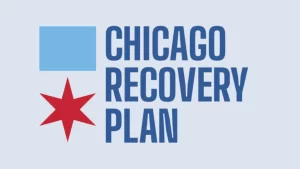 Augustana Solar Project Announcement
Augustana Solar Project Announcement
